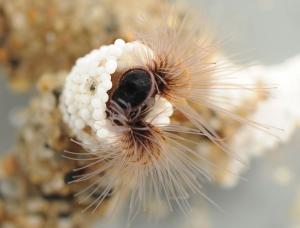Content:
An interdisciplinary group of researchers at UC Santa Barbara has taken strides in the development of an underwater adhesive that has the potential for a variety of biomedical and non-biological applications. Areas such as tissue repair, dental adhesives and other surface adhesion applications--which are often required under adverse conditions, such as salty sea water and in aqueous solutions containing organic impurities--could benefit from this glue, which replicates the adhesion strategy of the Sandcastle worm (Phragmatopoma californica), a segmented marine invertebrate commonly found along the California coast. Known for constructing hive-like shelters in colonies out of grains of sand glued together by a protein adhesive, sandcastle worms, along with mussels and other glue-secreting inhabitants of the intertidal zone, have served as inspiration for scientists and engineers seeking to develop an adhesive that can perform in wet, submerged and otherwise inhospitable conditions.


